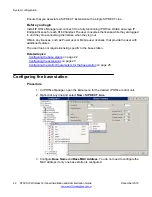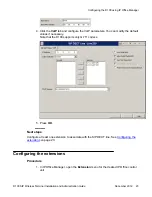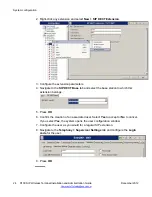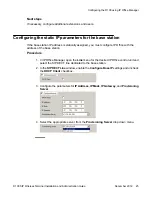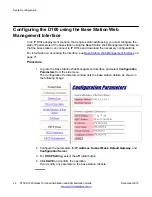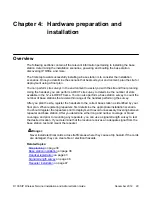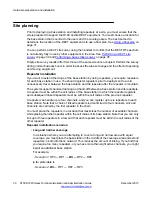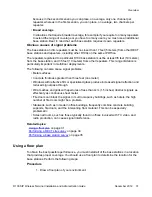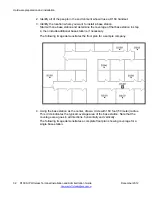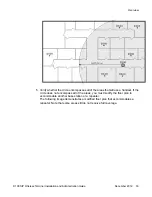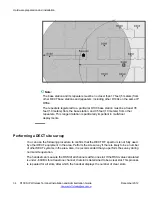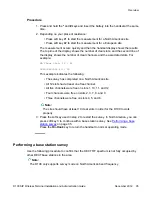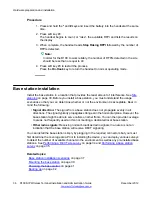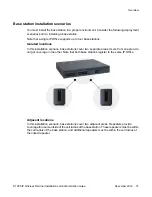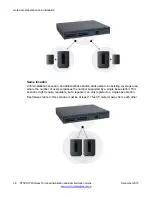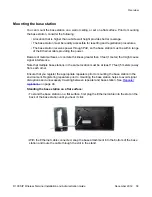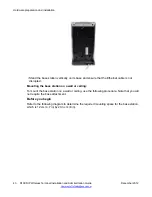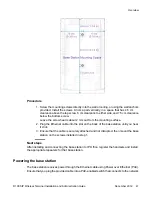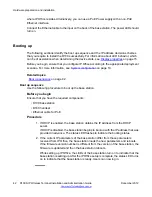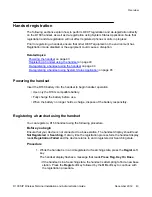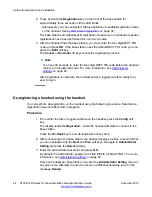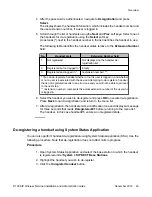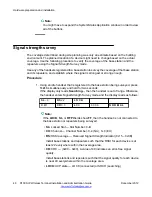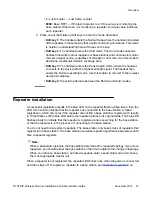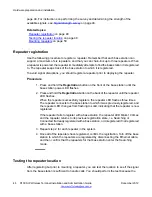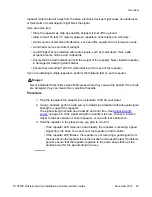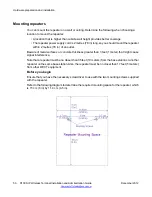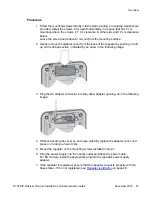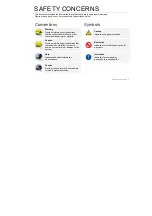
Procedure
1. Press and hold the
*
and
#
keys and insert the battery into the handset at the same
time.
2. Press soft key #3.
The handset begins to count, or “rake”, the available RFPI and lists the results on
the display.
3. When complete, the handset reads
Stop Raking RFPI
followed by the number of
RFPIs detected.
Note:
In order for the D100 to work reliably, the number of RFPIs detected in the site
should be less than or equal to 40.
4. Press soft key #3 to restart the process.
Press the
On-Hook
key to return the handset to normal operating mode.
Base station installation
Install the base station in a location that provides the least amount of interference. See
on page 30. Before you install a base station, you must understand the usage
scenarios so that you can determine whether or not the environment is acceptable. Bear in
mind the following:
•
Signal direction:
The signal from a base station does not propagate evenly in all
directions. The signal typically propagates strongest in the horizontal plane. However, the
base station might be able to serve callers on other floors. You can then provide coverage
to areas not frequently used and so not meriting a dedicated local base station.
•
Other radio signals:
Receiving normal broadcast radio signals in an area is not an
indication that the base station will receive DECT signaling.
You can install the base station simply by plugging in the required connectors but you must
first determine the coverage area. Prior to installing the device, you can deploy various surveys
to detect the number of available channels in the environment as well as any pre-installed base
stations. See
on page 34 and
Related topics:
Base station installation scenarios
on page 37
Hardware preparation and installation
36 D100 SIP Wireless Terminal Installation and Administration Guide
December 2012

